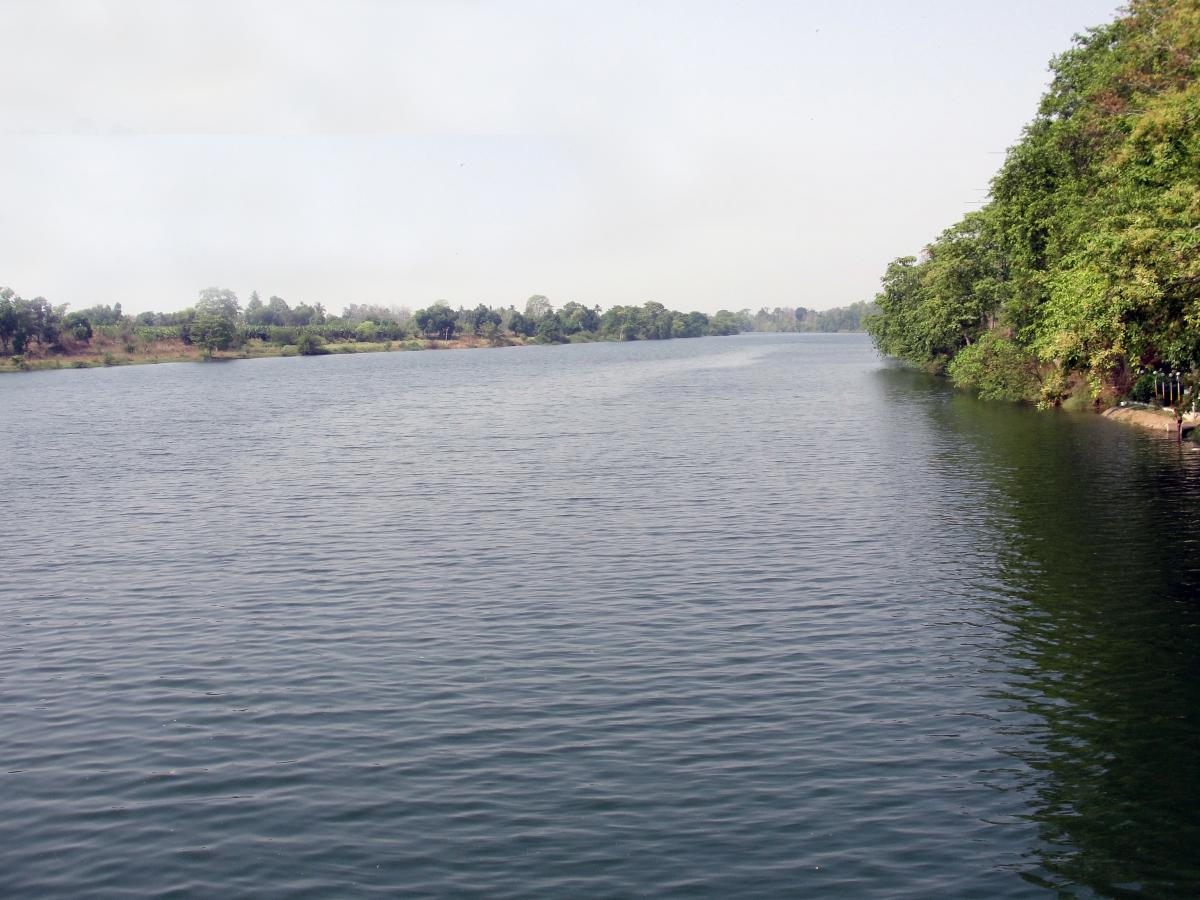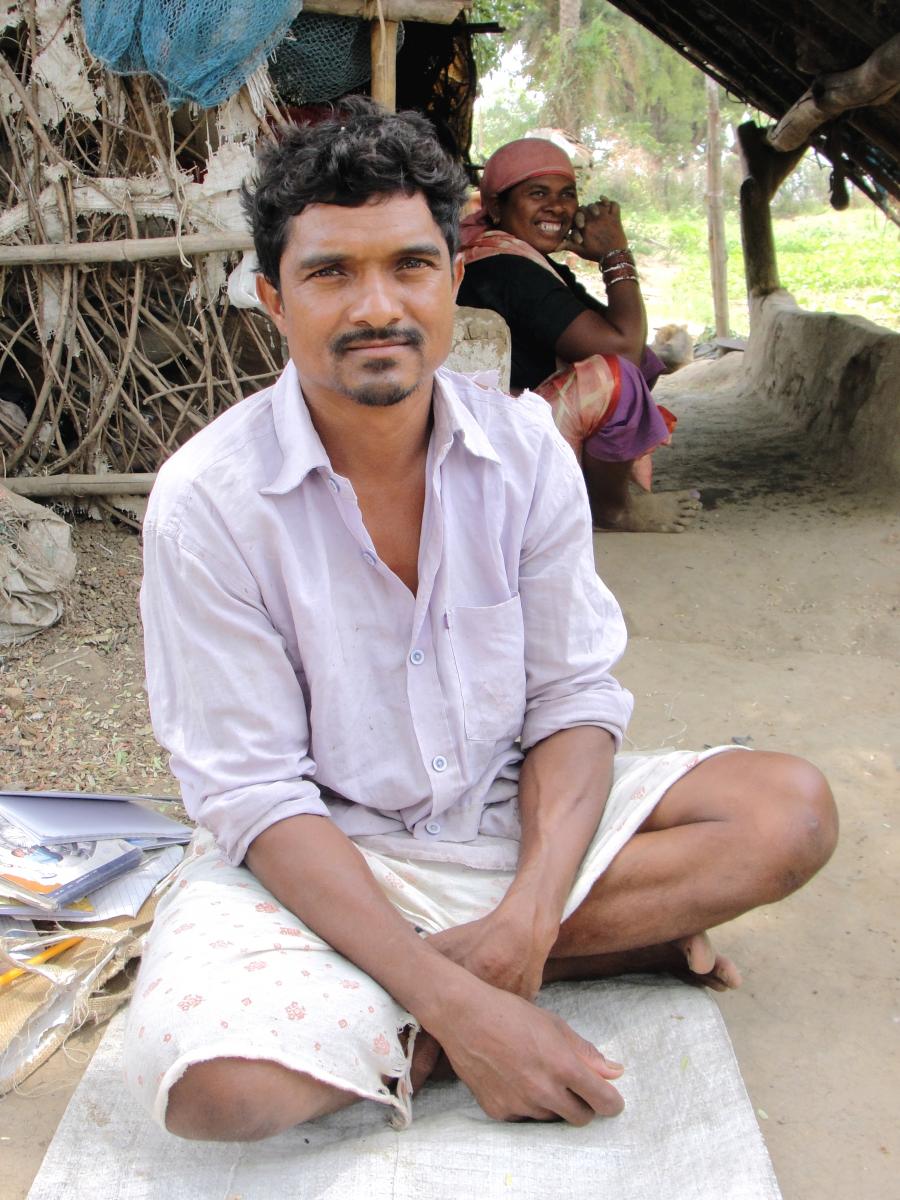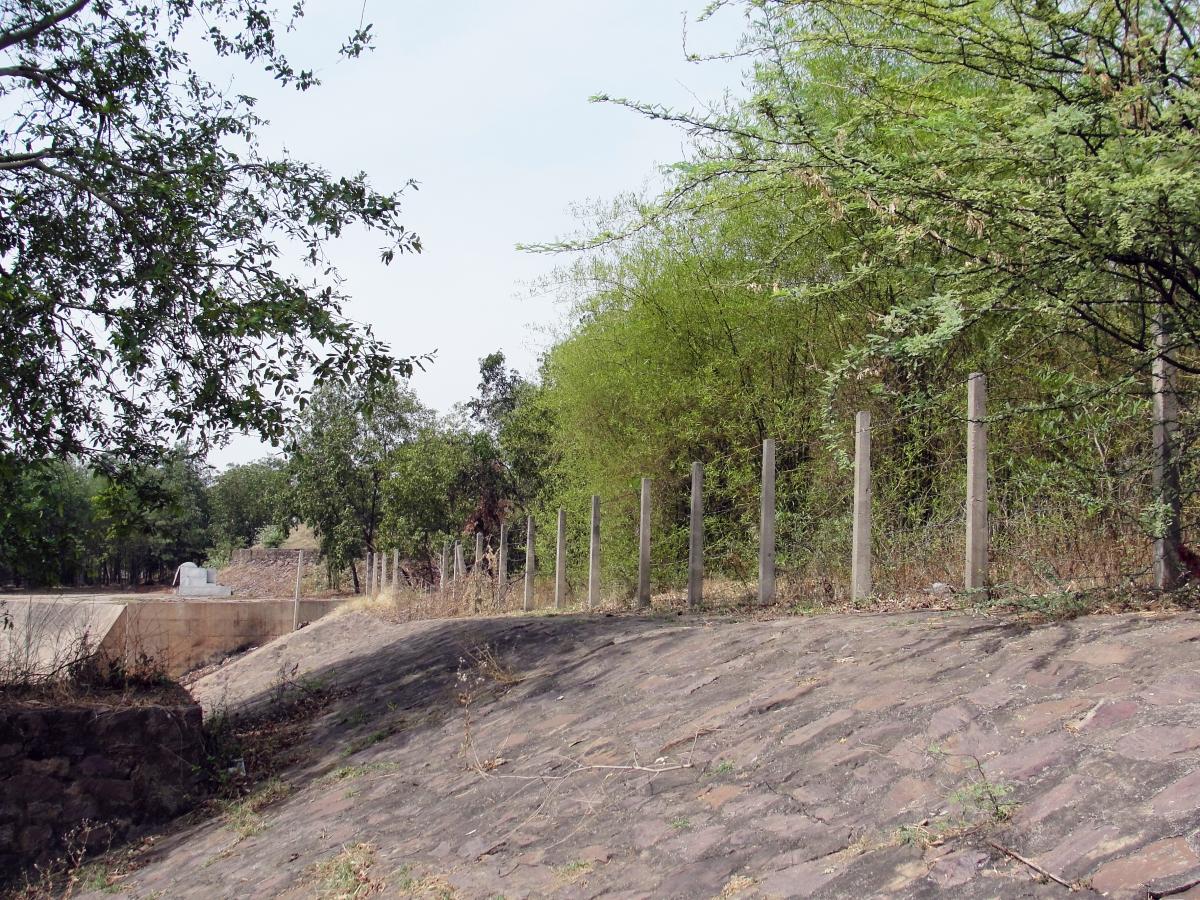
Dam built by Radius at Rasmara, Chhattisgarh
The Shivnath River, which is 345 kms long, is the Mahanadi’s largest tributary. It originates from the Godari village in Gadchiroli district, Maharashtra and flows northeast for 300 kms and joins the Mahanadi river near the town Shivrinarayan in Chhattisgarh. However, the Madhya Pradesh government website says, ‘Shivnathriver originates from the mountain at a height of 625 meters at Panabaras situated in the south western parts of Rajnandgaon and flows towards north east direction.’ The Dainik Bhaskar ran a story about this discrepancy where they faulted the government for misrepresenting information and teaching school children geography that isn't accurate.
15 years ago, rights to the 23.5 km stretch of the Shivnath River in Durg district, Chattisgarh were sold to a private company Radius Water Limited (RWL). Sounds strange? You bet. A river isn’t anyone’s property to buy or sell but the government of Madhya Pradesh apparently didn’t think so. In 1998, it gave RWL the rights to supply water to the Borai industrial area for 22 years.
Since then, villages on the banks of the river were not allowed to use its water for irrigation, fishing or any other purpose. More than 1000 families in the Durg district depended on the river for their livelihood. 80% used water for irrigation and 20%, for fishing. Affected villages included Mohamara, Mohalai and Rasmara on the area above the dam and Piperchedi, Otani, Bilaudi, Nagpura and Malaud on the area below the dam.

The Shivnath river near Mohamara village near Durg
“Due to the construction of the dam at Rasmara, the number of fish in the Shivnath river has drastically decreased. This has affected the economic condition of the fisher folk to a large extent.” says Vijay Nishad a fisherman in Siloda village. Another fisherman, Dhursai Nishad of Mohamara village, is currently working as a labourer in the fields during the day and catches fish at night to supplement his drop in income. The plight of other fisher folk in the area is similar to these two.

Dhursai Nishad is one of the affected fisherman at Mohamara village
'The river was fenced from both sides by the RWL to restrict villagers from taking water for irrigation and fishing” said villagers of Mohamara village. The water shortage caused conflict among the people and they didn’t know who to turn to.

Wire fencing at the Rasmara village near Durg
Enter Nadi-Ghati Morcha, a people’s forum in Chhattisgarh that worked on common property rights issues. Taking up the cause of the villagers, it campaigned against the RWL water privatisation project and demanded that the state scrap the contract. Finally in 2007, the government relented and set up a public accounts committee (PAC) to investigate the privatization of the Shivnath. The result stated clearly that the transaction was illegal as the river was no one’s to buy or sell, especially when so many livelihoods depended on it.
“With the constant intervention of the Nadi-Ghati Morcha, the RWL was compelled to give access to the villagers to take water from the Shivnath for irrigation and other purposes” said activist Shiv Kumar Nishad.
At the moment, the farmers and fisher folk have some respite but this conflict will not be resolved fully unless the government takes a stand – one that protects the rights of the people.